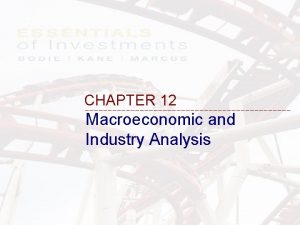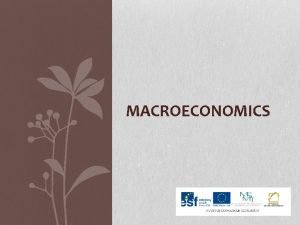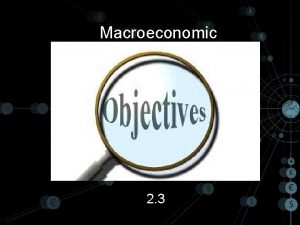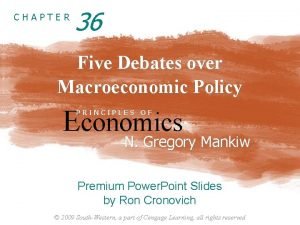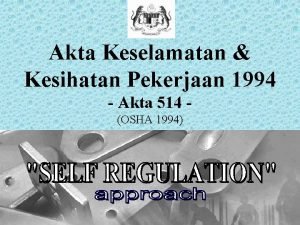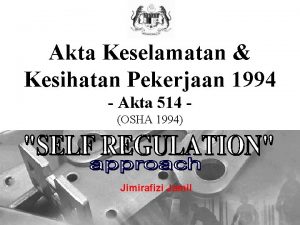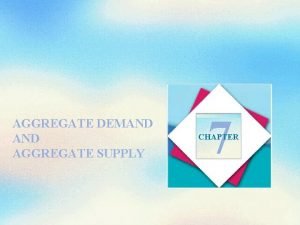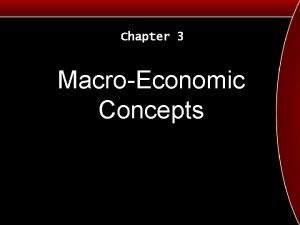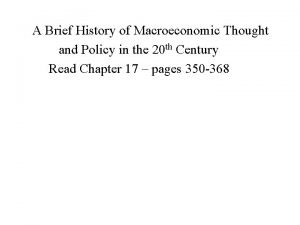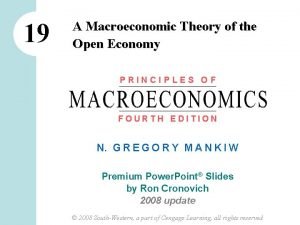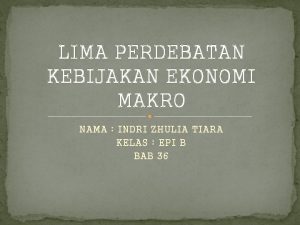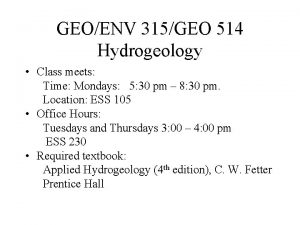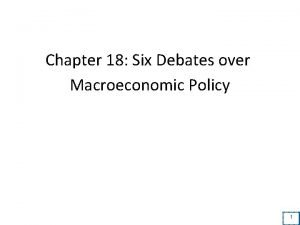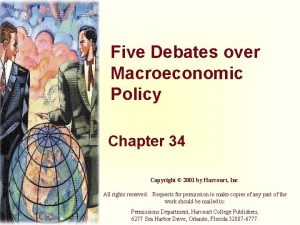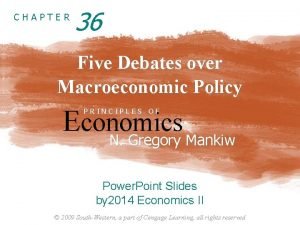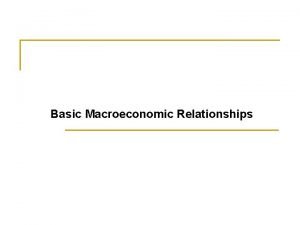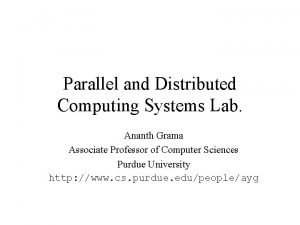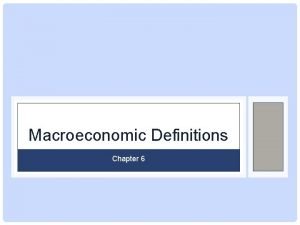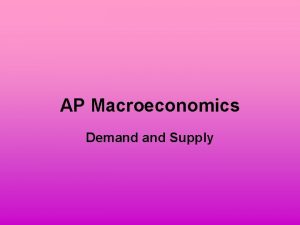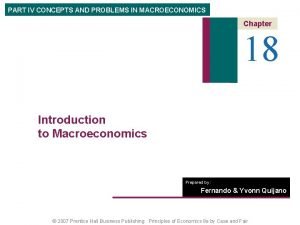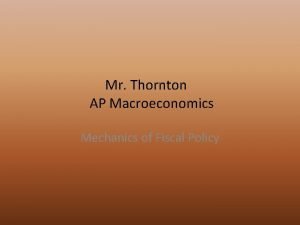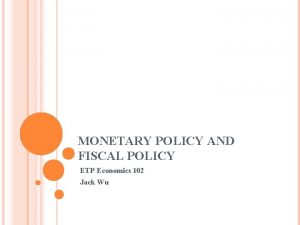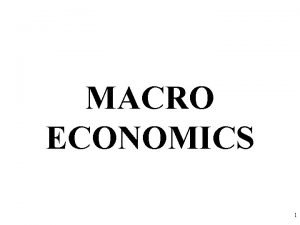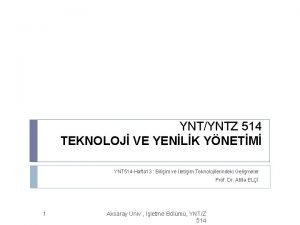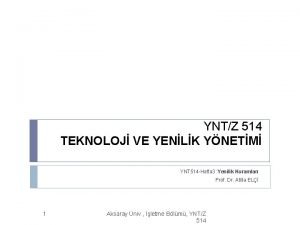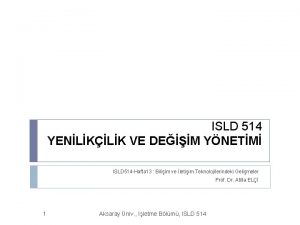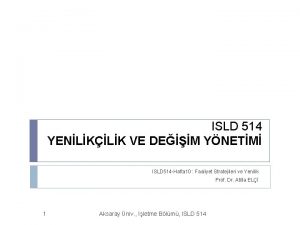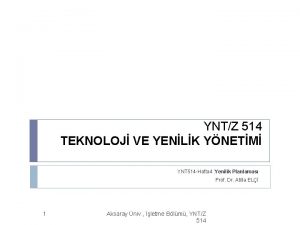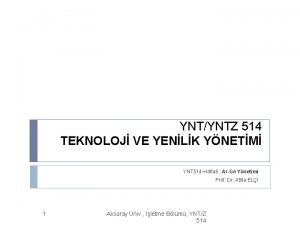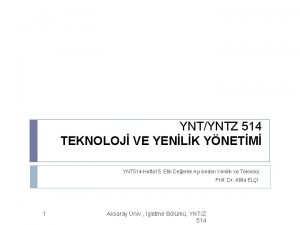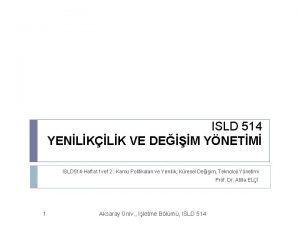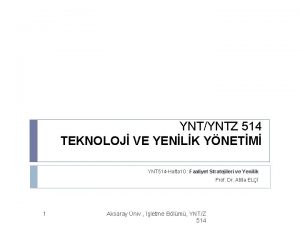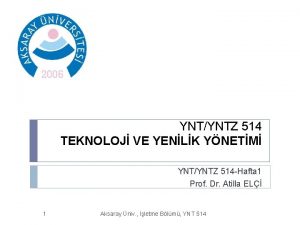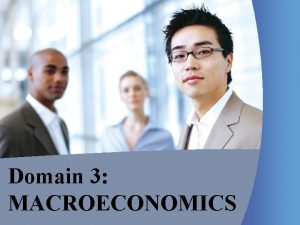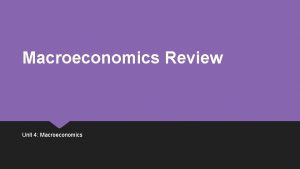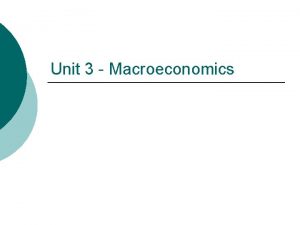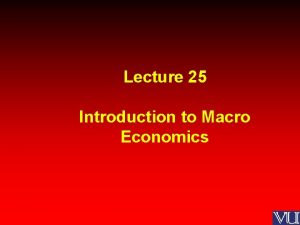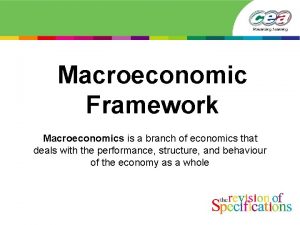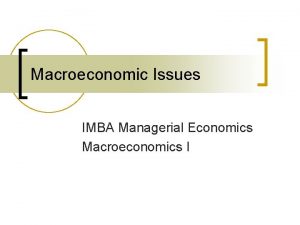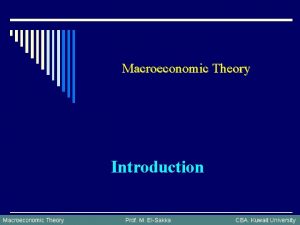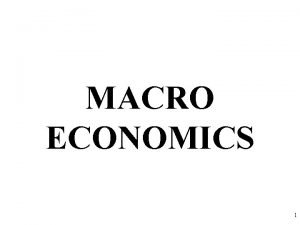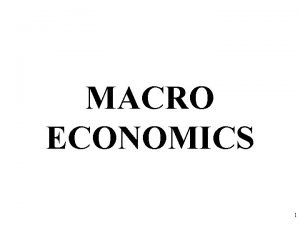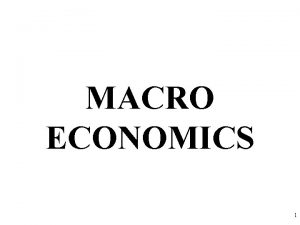Introduction to Macroeconomics Economics 514 Macroeconomic Analysis What































- Slides: 31

Introduction to Macroeconomics Economics 514 Macroeconomic Analysis

What is Macroeconomics l Macroeconomics examines economies at the aggregate (international, regional) level. l Some aspects of macroeconomics are about comparing two aggregate economies at the same time.

Why study the economy at the aggregate level? Much of macroeconomics is concerned with policies such as money supply or tax policy which is national in scope. l Equilibrium effects means that outcomes are different when we consider the economy in aggregate. l There are certain phenomenon like economic growth and business cycles which affect the aggregate economy equally. l We can consider interesting dynamic questions. l

Amateur History of Macroeconomics/Macroeconomic History l Around 1930, a major worldwide contraction occurred in virtually every developed economy. For example, output in the USA fell by more than 20% and unemployment rose to 25%. l Decline in output continued for the better part of a decade.

US Great Depression

Macro theory UK economist Lord Keynes developed a theory in which prices failed to adjust quickly so that a fall in corporate investment or a rise in savings leads to a decline in output. l Hicks developed IS-LM model, a mathematical version of Keynes thinking which is still the baseline framework for thinking about business cycles. l For 20 -30 years, most macro was about measuring the gap between demand potential output and stimulating demand sufficiently to reach potential. l

Much of Macroeconomics is about comparing one economy at different points in time. l Two phenomenon can be observed in single data series. l First, economy is growing with a secular trend over time. l Second, economy is growing unevenly across time.

Japan Post-war GDP

Trend and Cycle (Hodrick-Prescott Detrending)

Macro Progresses l During the 1950’s, macro conceptually split changes in output into two parts: Long-term growth which would be studied in models in which prices adjust perfectly to economic conditions. l Business Cycles which would be studied in models in which they would not. Advances in computation and statistics meant that large models could be constructed meant to represent large economies. l

Golden Era of Growth l Internationally, 1950’s and 1960’s were a period when output growth was at a faster pace than before the war. l Also a period in which there was relatively little international trade in goods and capital compared to pre-WWI period. l Fixed exchange rates under Bretton Woods agreement.

Neo-classical synthesis l Growing prominence of optimization theory and marginal analysis in microeconomics led to incorporation into macroeconomic models. l Optimal models of saving, investment and demand for liquidity were used to describe a medium term equilibrium around which the economy would fluctuate in the short-run.

Marginal Analysis l Simple principal of optimization of smooth functions is the first derivative of function should equal zero at extremum. l Economists consider the costs C and benefits B of some activity A. Net benefit of activity is B(A)-C(A). l Optimal level of A is B’(A*) = C ’(A*) , i. e. where the marginal benefit equals the marginal cost.

Models by “Term” l Long-term: Take prices as flexible and solve for potential level of output. l Medium Term: Take output as given and solve for optimal decisions of agents. l Short-term: Take dollar prices or wages as given solve for output.

Monetarism In 1960’s, monetarists led by Milton Friedman began to emphasize the role of the money supply (as opposed to real demand factors) as determinants of fluctuations in output and especially inflation. l In particular, Friedman pointed out the way that demand stimulus, once it becomes expected may lose its effectiveness. l

Inflation and Deflation in China

Stagflation 70’s l During 1970’s, oil price shocks led to rapid price rises and low production levels called stagflation. l In many country’s, inflationary expectations led to wage-price spirals and historically high inflation rates. l Developed economies begin 20 year slowdown in productivity growth rates.

International Economics In early 1970’s, US abandons Bretton Woods, and exchange rates start to float. After a few years of relative stability, exchange rates become one of the most volatile variables. l International trade increases. l Oil price rises damaging to developing countries, a problem partly solved when OPEC oil revenues are recycled as loans to 3 rd World. l

Volatile Exchange Rate

Rational Expectations Lucas develops economic theories which rigorously incorporate the formation of expectations of future in economic models. l Rational expectations models offer theoretical challenges but also explanations for rise of inflationary spirals and seeming ineffectiveness of monetary policy. l Expectations based models also offer explanation for volatility of exchange rates. l

Real Business Cycles l Kydland Prescott develop real business cycle models which unify longrun, medium run, and short-run into single coherent model. l One shortcoming of these models is that money plays no role in short-run. l RBC models are small and do not capture short-run dynamics well.

Eighties U. S. central bank cuts the money supply to counter-act inflation. Deep recession in USA and elsewhere. l Latin American countries default on their debts leading to persistent financial crisis. l Most developing economies begin long period of stagnation and even shrinking income levels. l Only East Asia continues to grow. China reforms agricultural system and India institutes structural reforms that spark growth. l

New Keynesian Models Using rigorous models of monopoly, a number of economists develop rigorous models in which prices are sticky because of adjustment costs. l Unlike RBC models, these models can explain why monetary policy has significant effects on output. l These models are typically static and cannot explain dynamics or long-run at all. l

Endogenous Growth l Productivity slowdown generates interest in models which can explain which policies are likely to lead to fastest or most welfare enhancing growth levels. l Two competing schools. “Brains” school emphasizes role of education and human capital. “Ideas” school emphasizes R & D and invention of new goods and technologies.

1990’s l l l Globalization: Big expansion in international trade, internatioal lending and direct investment. Productivity Takeoff: After 20 years of slow growth, in 1995 productivity growth takes off again. Financial crisis in a number of developing economies in Latin American and East Asia. Rise of Unemployment in Europe, Inequality in USA, Economic Stagnation in Japan Central Banks Choose Monetary Policies meant to lead to steady inflation: Inflation Targeting.

Structural Unemployment in HK

New Neo-classical Synthesis l Economists begin to incorporate New Keynesian models of price stickiness into unified RBC framework. l l These models explain which type of policies can offset effects of price-stickiness which might lead to underemployment without leading to wage-price spirals. Economists also incorporate models of financial market imperfections into unified framework to explain financial crises in emerging markets.

This course Divide subjects into 3 categories: long, medium and short-term. l Examine dynamics of productivity, inflation, unemployment in the long-run. l Examine savings and investment decisions using dynamic marginal analysis and implications for fiscal policy and trade deficits in medium run. l Examine business cycles in the short-run. l

Focus Develop rigorous models of macroeconomic issues at each level of analysis (but not necessarily develop unified models as we would do at the Ph. D. level). l Emphasize some empirical uses that we can put to these theories. l Most applications were developed to explain economic phenomenon in USA and EU, but we will have bias when possible to focus on Asian issues. l

Requirements l 3 exams associated with theories of various terms. Final may/may not be cumulative. l 3 problem sets for test preparation. l Some empirical exercises to be graded for credit.

What are the students expected to know? l Mathematically, students should be able to understand first derivatives (partial and time included). l Understand statistical concepts like expected value, variance, covariance & correlation. l Very basic understanding of national accounts (i. e. what is output, consumption, investment etc. )
 Macroeconomic and industry analysis
Macroeconomic and industry analysis Macroeconomics definition economics
Macroeconomics definition economics State 3 objectives of osha 1994 act 514
State 3 objectives of osha 1994 act 514 Unemployment
Unemployment Five debates over macroeconomic policy
Five debates over macroeconomic policy Penalti seksyen 24 osha
Penalti seksyen 24 osha Akta 514 osha
Akta 514 osha Macroeconomic equilibrium occurs:
Macroeconomic equilibrium occurs: Macroeconomic deals withसमग्रलक्षी
Macroeconomic deals withसमग्रलक्षी History of macroeconomic thought
History of macroeconomic thought A macroeconomic theory of the open economy
A macroeconomic theory of the open economy Perdebatan kebijakan makro ekonomi
Perdebatan kebijakan makro ekonomi Geo 514
Geo 514 Six debates over macroeconomic policy
Six debates over macroeconomic policy 5 debates over macroeconomic policy
5 debates over macroeconomic policy Five debates over macroeconomic policy
Five debates over macroeconomic policy Basic macroeconomic relationships
Basic macroeconomic relationships Cs 514 purdue
Cs 514 purdue Ananth grama
Ananth grama Macroeconomic definitions
Macroeconomic definitions Nicepp
Nicepp Maastricht university economics and business economics
Maastricht university economics and business economics Elements of mathematical economics
Elements of mathematical economics Economics subject
Economics subject Macroeconomics
Macroeconomics Crowding out effect macroeconomics
Crowding out effect macroeconomics Crowding out effect macroeconomics
Crowding out effect macroeconomics Fiscal policy effect on interest rates
Fiscal policy effect on interest rates Managerial economics meaning in simple words
Managerial economics meaning in simple words Liquidity preference theory
Liquidity preference theory Example of micro economic
Example of micro economic Nominal gdp
Nominal gdp
